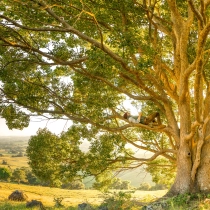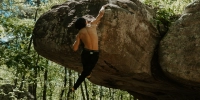

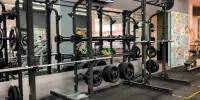




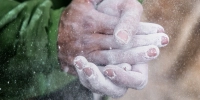
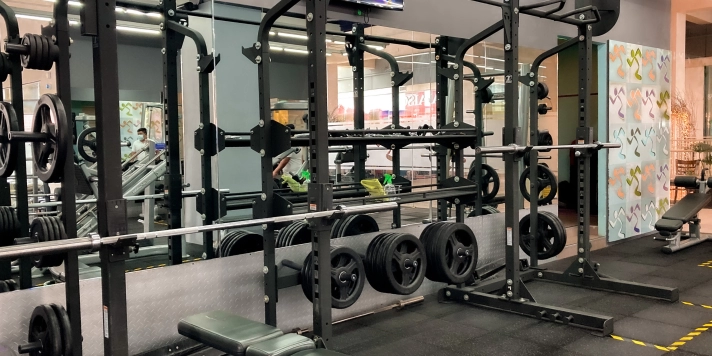
training
While strong forearms can contribute to better climbing performance, it's important to understand that climbing involves a combination of factors beyond just forearm strength. Technique, body positioning, flexibility, core strength, and mental focus also play significant roles in climbing proficiency. Developing well-rounded strength and skill across multiple muscle groups, including the core, back, and legs, is essential for efficient and effective climbing. Additionally, proper technique and efficient movement patterns can help conserve energy and improve overall climbing ability. So, while strong forearms can be advantageous, they are just one piece of the puzzle in becoming a better climber.
Hand grippers can help improve grip strength for climbing by targeting the muscles and tendons of the hands and fingers. They can be a useful tool when combined with climbing-specific exercises and training. However, climbing involves more than just grip strength, so it's important to have a well-rounded training approach.
Yes, rock climbing can effectively build and strengthen your back muscles. The pulling movements involved in climbing engage and challenge the muscles in your upper back, including the latissimus dorsi (lats), rhomboids, and trapezius. Regular climbing sessions that incorporate a variety of routes and techniques can contribute to improved back muscle development. However, the extent of muscle building will depend on factors such as the intensity and frequency of climbing, individual genetics, and overall training regimen.
Rock climbing can contribute to developing a strong and toned physique, but whether it will get you "ripped" depends on various factors. Here's some information to consider:
- Strength and Muscular Endurance: Rock climbing engages multiple muscle groups, particularly those in the upper body, including the arms, back, and core. It requires sustained effort and muscular endurance to perform challenging moves and maintain body control. Regular climbing sessions can help develop strength and muscle tone in these areas.
- Body Composition: Climbing can help reduce body fat and improve muscle definition, which can contribute to a more defined appearance. However, achieving a "ripped" physique involves a combination of factors, including diet, overall body fat percentage, and targeted strength training in addition to climbing.
- Training Intensity and Frequency: The intensity and frequency of your climbing sessions can influence your results. Climbing harder routes or problems, incorporating strength training exercises specific to climbing, and maintaining a consistent training schedule can help maximize your physical gains.
- Nutrition and Rest: A well-balanced diet that supports your training goals, including sufficient protein for muscle recovery and growth, is important. Additionally, allowing for proper rest and recovery periods between climbing sessions is crucial for muscle repair and growth.
While rock climbing can contribute to a more defined and muscular physique, it's important to note that individual results may vary. Genetics, overall training approach, and other lifestyle factors can also impact your outcomes. Ultimately, consistency, proper training techniques, and a balanced approach to overall fitness and nutrition are key elements in achieving your desired physical goals.
Whether climbing is better than going to the gym depends on personal preferences and fitness goals. Climbing offers a unique experience that combines physical activity with problem-solving and mental challenges. It can be more engaging and enjoyable for those who prefer outdoor activities and a dynamic workout. However, the gym provides a controlled environment with a variety of equipment and training options, allowing for targeted workouts and specific muscle group training. Ultimately, it's up to you to decide what type of activity aligns best with your interests and fitness goals.
Climbing doesn't really develop significant muscle mass, rather, it primarily develops functional strength and overall fitness. You won't notice too much muscle mass gain, or getting bigger. But you will notice a lot of strength gains, especially in your upper body, and especially with your grip.
Of course everyone is different and many people, including myself, do tend to get slightly bigger when getting into shape and exercising more. While I don't get "big", I do tend to gain some noticeable mass, but again, nothing compared to actually lifting weights.
Yoga can benefit rock climbing in multiple ways:
-
Flexibility: Yoga improves flexibility, aiding climbers in reaching holds and performing movements more effectively.
-
Strength and Stability: Yoga poses strengthen muscles, enhancing overall body strength and stability, which translates to better control and balance while climbing.
-
Body Awareness: Yoga cultivates body awareness, helping climbers better understand their body positioning and movements, leading to improved technique and efficiency on the wall.
Climbing can indeed contribute to developing stronger and more defined forearms. The sport involves utilizing your grip strength extensively, which places a significant demand on the muscles in your forearms. As you climb, you engage the flexor muscles in your forearms, which are responsible for gripping and pulling.
Over time, consistent climbing and challenging yourself on various routes can lead to increased forearm strength and muscle development. This can result in more prominent and toned forearms.
It's worth noting that the extent of forearm development can vary depending on factors such as climbing frequency, intensity, duration, and individual genetics. Not all climbers will develop large forearms, and the degree of muscle growth will differ from person to person.

